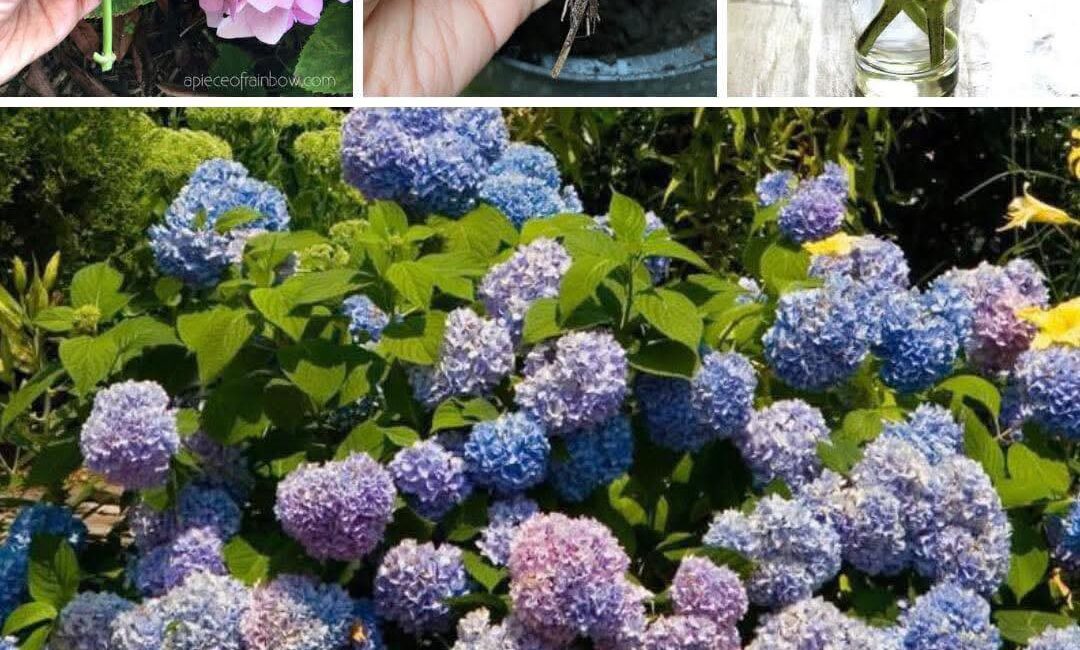- Keep the rooting medium consistently moist but not waterlogged.
- Mist cuttings daily if humidity inside the cover drops.
- Open the plastic cover briefly every few days to reduce fungal growth.
How Long Does It Take for Hydrangea Cuttings to Root?
- Softwood cuttings typically root in 2-4 weeks.
- Semi-hardwood may take 4-8 weeks.
- Hardwood cuttings can take 3-6 months.
Check for root development by gently tugging the cutting; resistance indicates root growth.
Caring for Rooted Hydrangea Cuttings
Gradual Acclimatization (Hardening Off)
Once roots are established:
- Gradually expose cuttings to normal humidity by removing plastic covers for increasing durations over 7-10 days.
- This prevents shock and prepares plants for outdoor conditions.
Transplanting to Larger Pots
- Use a rich, well-draining potting soil.
- Keep newly potted plants out of direct sun initially.
- Water regularly to maintain moist soil.
Fertilization
- After 4-6 weeks, begin feeding with a balanced, diluted fertilizer to promote growth.
- Avoid over-fertilizing which can harm young plants.
Transplanting Hydrangea Cuttings to the Garden
- Transplant outdoors after last frost date in your area.
- Choose a location with partial sun to shade.
- Prepare soil rich in organic matter with good drainage.
- Space plants 3-5 feet apart depending on variety.
- Water deeply after transplanting and mulch to retain moisture.
Troubleshooting Common Problems When Growing Hydrangea from Cuttings
1. Cuttings Wilt or Dry Out
- Cause: Too little humidity or excessive heat.
- Solution: Increase humidity, reduce temperature, mist regularly.
2. Cuttings Rot or Mold Develops
- Cause: Overwatering or poor drainage.
- Solution: Improve drainage, reduce watering, increase airflow.
3. Cuttings Fail to Root
- Cause: Incorrect timing or weak cuttings.
- Solution: Try different cutting types (softwood vs hardwood), use rooting hormone, ensure proper temperature.
Advanced Techniques for Hydrangea Propagation
Propagation by Layering
- Bend a low stem to the ground.
- Wound it slightly and bury it under soil.
- Roots form while still attached to the mother plant.
- Once rooted, sever and transplant.
Propagation from Leaf or Stem Buds
- Less common but possible with certain hydrangea types.
Tips for Maximizing Success
- Use healthy parent plants free of disease.
- Sanitize tools to prevent spreading pathogens.
- Monitor environmental conditions carefully.
- Be patient — some varieties root slower.
Conclusion: Growing Hydrangeas from Cuttings Made Easy
Propagating hydrangeas from cuttings is a satisfying and cost-effective way to expand your garden with your favorite varieties. By following best practices for timing, cutting selection, rooting environment, and aftercare, you can achieve high success rates.
Hydrangea propagation not only helps maintain genetic consistency but also fosters a deeper connection to your plants. With a little patience and attention to detail, you’ll enjoy flourishing hydrangea plants that brighten your outdoor spaces year after year.
Pages: 1 2




